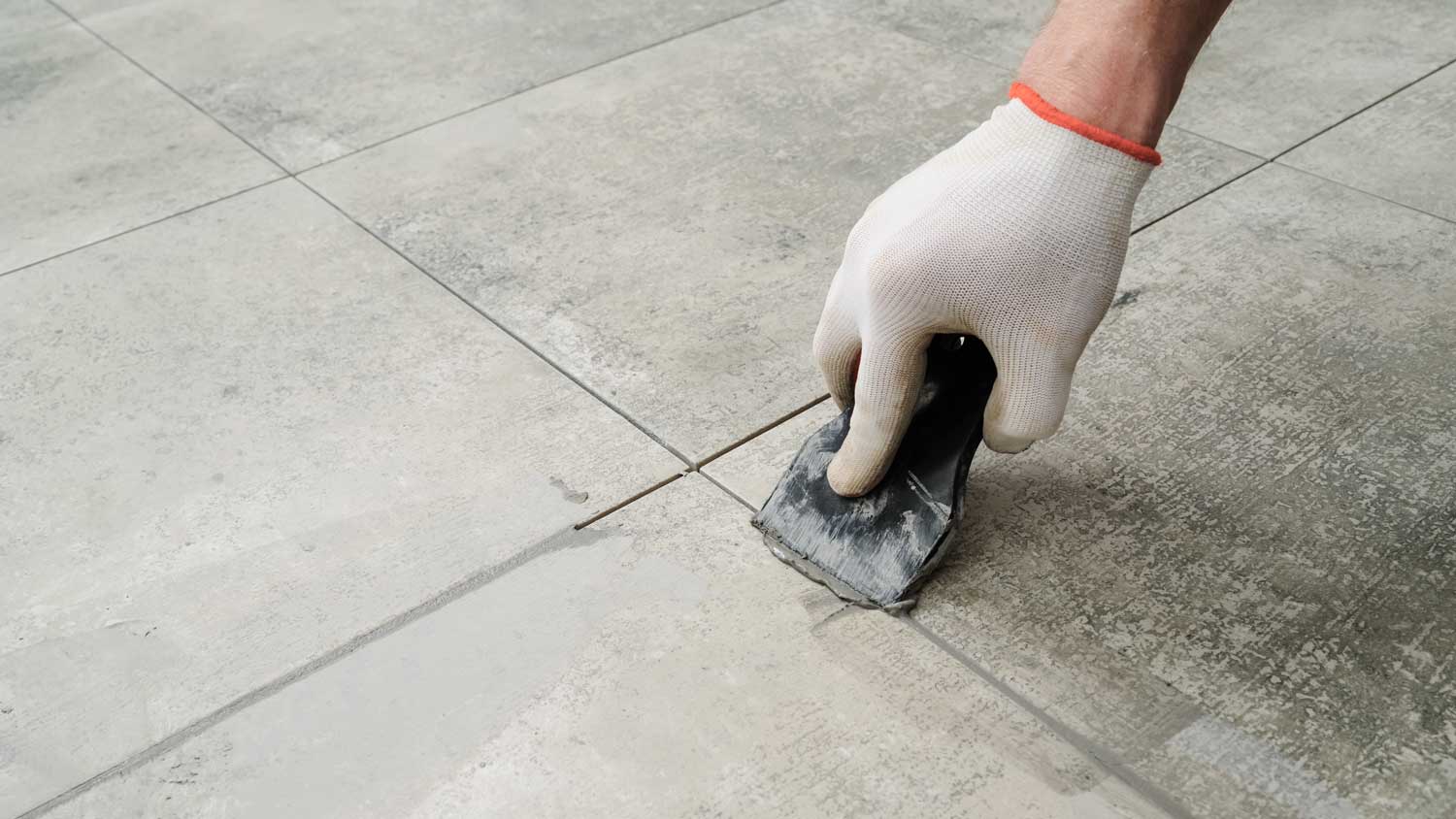
Discover the average cost of grout repair, key price factors, and tips to save. Get expert advice to plan your grout repair project with confidence.
This shortcut could end up costing you time and money in the long run


It’s always best to remove old grout before applying new grout.
If you regrout over old grout, be sure to use the same type of grout.
Don’t regrout over grout that’s cracked, damaged, or has mold.
Stained or crumbling grout can be a real eyesore that detracts from the beauty of your tiled bathroom floor or kitchen backsplash. Fortunately, regrouting is usually a doable DIY project, and it can make your tiles look fresh and clean again. If there are only a few small areas of grout that need to be replaced, you may be wondering if you can regrout over old grout. Before you dive in, here’s what you need to know about grouting over existing grout.
Yes, technically you can regrout over old grout, but it’s generally not recommended without some prior preparation. While it might seem like a time-saving shortcut, regrouting over existing grout can come with risks. These risks can impact the durability and appearance of your newly regrouted tiles. It’s crucial to weigh the benefits and drawbacks before deciding to regrout over old grout.
Adding new grout over old grout can save you significant time and effort, and eliminating the professional cost of regrouting keeps your project budget in line. This makes it an appealing option for those looking to quickly and economically refresh their tiles.
This method also eliminates the need for the laborious DIY task of removing old grout, allowing you to get straight to the regrouting process.
However, there are notable drawbacks and risks:
Poor adhesion: If you choose to regrout over old grout, the new grout may not bond well to the old grout, leading to a less durable finish.
Sloppy appearance: The end result of regrouting over old grout might not be as aesthetically pleasing, because the new grout layer can appear uneven.
Underlying issues: Perhaps most importantly, regrouting over old grout doesn’t allow you to address underlying issues such as mold growth that could compromise the integrity of your tiles in the long run.

Before deciding to regrout over old grout, several factors should be considered to ensure the best possible outcome. Assessing the type and condition of the existing grout is crucial, as is understanding the potential challenges of the project.
When regrouting over old grout, it's vital to use the same type of grout to ensure proper adhesion. Common types of grout include epoxy and cement grout. Each type has distinct formulations and bonding characteristics, and matching the new grout to the existing type helps achieve a uniform and durable finish.
For instance, cement grout is commonly used for both walls and floors, offering flexibility and ease of application, while epoxy grout is used for moisture-prone areas like bathrooms and kitchens. Placing a different type of grout over the old grout may lead to issues with grout performance.
The condition of the old grout is a significant factor. If the existing grout is severely cracked, chipped, or damaged, or if mold and mildew are present, it’s best to remove the old grout completely. Adding new grout over compromised grout won’t address the underlying issues and could lead to further deterioration. Ensuring the old grout is clean and free from contaminants is essential for a successful regrouting project.
Removing old grout can be a challenging and time-consuming task. It requires specific tools, such as a grout removal tool, which can be manual or electric. The process involves carefully chipping away the old grout without damaging the tiles, which demands patience and precision. Depending on the size of the area, removing old grout can take several hours to a few days.
For those who find the task daunting or lack the necessary tools, hiring a local grout repair pro is a great option. Professionals have the expertise and equipment to quickly and efficiently remove old grout and apply new grout, ensuring a high-quality finish. While this option comes at a cost, the benefits of a professionally regrouted floor or wall can outweigh the expense, providing a durable and aesthetically pleasing result.
From average costs to expert advice, get all the answers you need to get your job done.

Discover the average cost of grout repair, key price factors, and tips to save. Get expert advice to plan your grout repair project with confidence.

Damaged tiles should be fixed right away. In this guide, find out all of the different factors that affect your tile repair cost.

Discover the cost to regrout shower, including average prices, key cost factors, and tips to help you budget for a fresh, watertight shower.

If you’re starting a bathroom refresh, you may wonder if you can paint shower tile. Find out everything you need to know about shower tile paint in this guide.

Discover the key differences between acrylic versus silicone caulk to choose the right sealant for your next DIY project.

Understanding peel and stick tile pros and cons will help you decide whether this low-cost method is the right choice for your project.